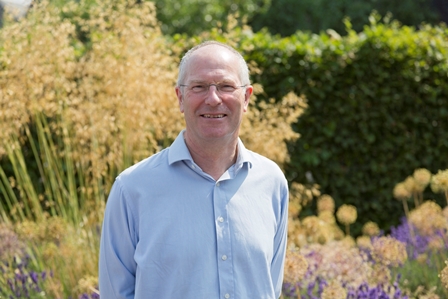March 2016
Under existing EU regulations 37 invasive species are banned from sale, breeding, transport, keeping or release. However, the list does not include species native to one Member State that could be invasive in another.
The regulations allow member states to create national and European regional lists of invasive species and help stop them spreading from other parts of the continent. For Invasives Week, we are calling on the UK government to create such a list and slow the influx of invasive species like the quagga mussel.
However, it’s the invasive non-native species that are already on our shores that are creating such problems for the National Trust.
Floating pennywort (shown above), a plant with small fleshy stems that grows rapidly in ponds and slow-flowing streams, has spread quickly across southern England since it was first spotted in the early 1990s. The pennywort forms a dense mat over the water, cutting out sunlight for plants below and impacting other aquatic life. On one of the only chalk streams in London, Floating pennywort is rife. At the River Wandle, south London, National Trust volunteers from Morden Hall Park have been working alongside our partners in the Wandle Trust to pull pennywort from the river by hand. This can only control the problem; the Floating pennywort has proven impossible to eradicate.
Elsewhere, control measures against predatory invasive species have found more success.
Lundy Island, in the Bristol Channel has long been a haven for seabirds. The jewel in its crown is the Manx shearwater. Even just a decade ago, Lundy’s Manx shearwater were faring poorly. Just a few hundred pairs were left on the island and their eggs and chicks were being preyed on by rats. There was real danger that within a few years the shearwater would have disappeared from the island.In 2002, in a bid to restore Manx shearwater numbers, the National Trust embarked on an ambitious project with RSPB, English Nature (now Natural England) and Landmark Trust to eradicate rats from the island. The speed of the recovery has been remarkable. There are now thousands of pairs of the seabirds breeding on the island.
Elsewhere we’re experiencing mixed success in tackling invasive non-native species.
The American signal crayfish carries a plague that has wiped out the globally endangered native white clawed crayfish. The River Allen, which flows through the Kingston Lacy estate in south east Dorset, used to be a stronghold of the native white clawed crayfish with thousands recorded two years ago. After an extensive search last year only 5 native crayfish were found.
Signal crayfish have wreaked havoc in historic National Trust lakes and ponds, burrowing into lake sides and causing thousands of pounds worth of damage. At the Vyne, Hampshire, one ranger could fit the length of his body into the hole in the bank that the Signal crayfish had created. Fitting wire netting to the lake banks at the Vyne to prevent the crayfish from burrowing into the lake sides has cost the National Trust around £40,000.
There’s plenty that people can do to stop the spread of invasive non-native species. The “Check, Clean, Dry” campaign encourages people who use waterways - from anglers to recreational boat users - to clean their equipment properly. In doing so they could really help stop the spread of species like Floating pennywort.
During Invasives Week partner organisations are running a series of events and workshops exploring how we can tackle the spreading problem. Find out more at www.nonnativespecies.org/invasivespeciesweek
Dr David Bullock
Head of Nature Conservation
National Trust
Aspects of this blog were originally published on the National Trust's website
The opinions expressed in this blog are the author’s and not necessarily those of the wider Link membership




Latest Blog Posts